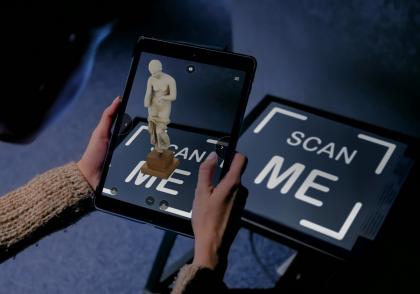Augmented Reality

Turning the clock thousands of years back, with one click
Exhibits in museums often lack inspiration, even making viewers bored or overloaded. Traveling gives one a holistic sense of reality. Observing an object where it was discovered, part of local cultural and heritage throughout centuries gives it depth and meaning. Going 3-Dimensions further, Augmented Reality applications are evolving into useful tools to better convey and comprehend the history and past.
Augmented Reality is the incorporation of multimedia content with archaeological sites and objects, using mobile devices such as a smartphone or tablet. It enhances the natural world with digital content and allows users to gain a deeper understanding of cultural heritage, "visiting" places where access is difficult or restricted.
My personal approach to AR applications is to give a new dimension to museum visits, to diminish distance by bringing objects together that will never share the same physical space. Instead, the objects travel virtually far beyond the boundaries of their physical space, ensuring that they are available and accessible to anyone.
Implementation of such applications by cultural institutions offers a number of key benefits:
1) Viewing of the object from all angles, even those impossible to have access to in person (such as top view) 2) Personalized interaction with the model within a comprehensive narrative environment. 3) Insert of additional information that the viewer/ user only discovers through manipulating the model. 4) Virtually "adding" object parts, such as missing pieces or indicative coloring.

Composing a realistic 3D model
The first step in creating an AR application is 3D digitization. When I am called to 3D digitize an object of historical value, my goal is not just to document via a high-precision model but to provide the best possible photorealism that can render the object equal to, if not better than conventional photography.
The magic of each object is not communicated only by volume but, to a great extent, by its texture as well as lighting, which can uniquely highlight all volume.

Implementation
To achieve this, I use a combination of 3D scanning and photogrammetry to merge the advantages of both methods, high accuracy scanning with photorealistic photogrammetry.
After the initial production of models, they are re-illuminated through 3D digital software to regain the photographic properties of controlled illumination, shade, shine, and contrast.